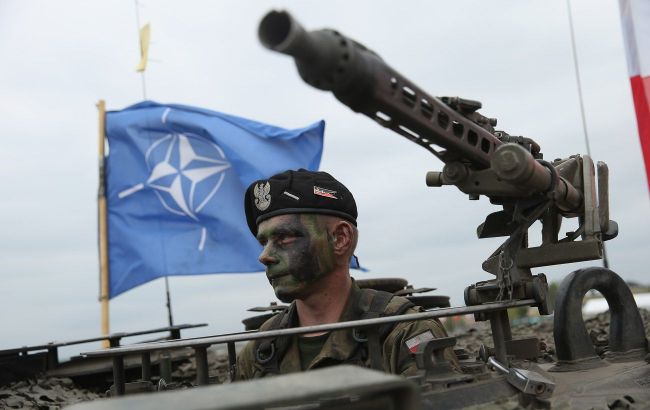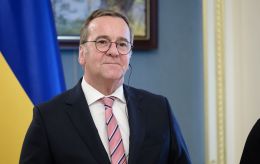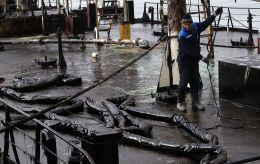Danish intelligence outlines preconditions and terms for beginning Russia’s war against NATO
 Photo: Russia is preparing an invasion of NATO countries (Getty Images)
Photo: Russia is preparing an invasion of NATO countries (Getty Images)
Russia will be ready for war with NATO within several years. The Russian army is already increasing its military potential, and a number of factors will be decisive for the start of an invasion, the Danish Defense Intelligence Service reports.
On February 11, Danish intelligence published a declassified intelligence assessment detailing the growing Russian threat to Denmark and NATO members.
According to the findings, Russia may be ready to launch a full-scale war against the North Atlantic Treaty Organization (NATO) within the next five years.
The assessment states that Russia is restructuring its Armed Forces to fight the Alliance on equal footing. The Kremlin is doing this with financial and material support from China, North Korea, and Iran.
The report indicates that Russia’s willingness to risk a war with NATO could increase if European countries do not simultaneously expand their military potential in response to Moscow’s military buildup.
On February 12, the UK International Institute for Strategic Studies (IISS) reported that in 2024, all European countries collectively spent $457 billion on defense, while Russia alone spent $462 billion.
The Danish Defense Intelligence Service assessment states that while Russia has not yet decided to launch a full-scale war against NATO, it is expanding its military capabilities to keep that option open.
"At present, Russia avoids actions that could trigger Article 5 of the Alliance - the mutual self-defense commitment - but it may take even greater risks if it sees the balance of power shifting in its favor," the report states.
The Danish Defense Intelligence Service assessment also notes that if Russia perceives NATO as weakened militarily or politically, it may be more willing to attack a European NATO member. The risk increases particularly if Russia doubts continued US military support for Europe.
Danish intelligence also believes that ending or freezing the war in Ukraine on terms favorable to Russia would free up significant military resources, which the Kremlin would deploy in another future military conflict.
Time frames
The Danish Defense Intelligence Service report outlines the timeline for the growing Russian military threat in the event of an end to hostilities in Ukraine:
- Russia could launch a local war against a neighboring state (excluding Ukraine) within six months.
- Russia could pose a real threat to NATO countries in the Baltic region within two years.
- Russia could be ready for a large-scale war in Europe within five years, assuming NATO does not rearm at the same pace as Russia.
These conclusions by Danish intelligence fully align with assessments by the American Institute for the Study of War (ISW) regarding Russia's efforts to restructure and prepare its armed forces and society for a future conflict with NATO in both the medium and long term.
In its February 12 report, ISW reiterated that Russia’s restructuring of its military, the revival of the Moscow and Leningrad Military Districts, and the creation of long-term mechanisms for militarization and radicalization of Russian society against Western ideals and values indicate that Russia is preparing for a future conflict with NATO.
Likelihood of Russian war against NATO
According to ISW, Russia is testing new defensive technologies and strike drones in Ukraine. Similar innovations are now being used against NATO member states.
NATO Secretary General Mark Rutte stated that the Alliance’s response to a possible Russian invasion would be devastating, and Putin would lose. However, he emphasized that NATO members must increase their defense spending.
Meanwhile, according to the International Institute for Strategic Studies (IISS), Russia has suffered devastating losses in its war against Ukraine. However, the enemy remains capable of conducting offensive operations for at least another year.

